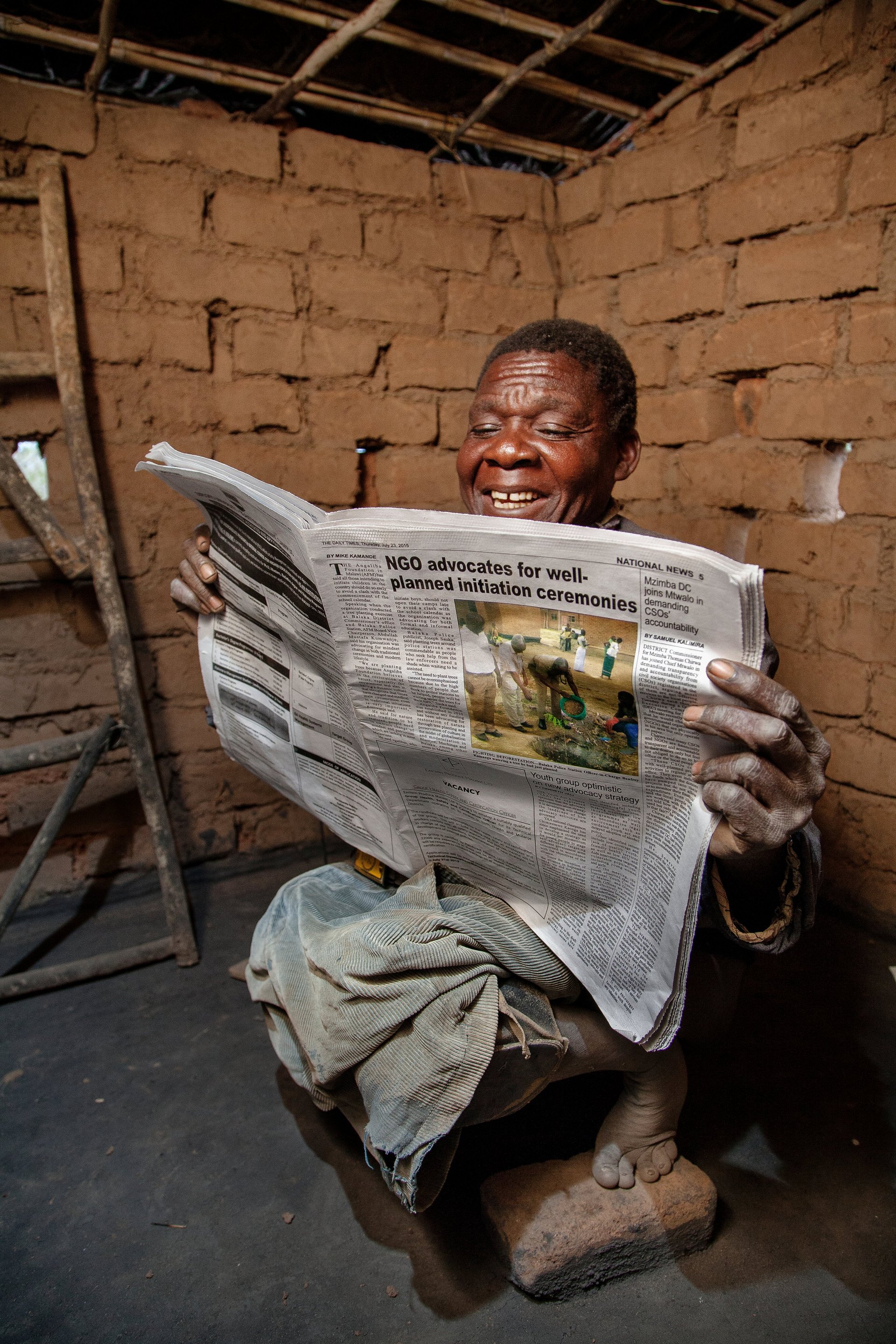Photos: What using the toilet looks like around the world
While in some parts of the world “improved sanitation” means getting a high-tech Toto toilet—self-cleaning and with a heated seat amongst other comforts—for a large part of humanity, it means having a toilet at all. According to the latest data from UNICEF—the United Nations Children’s Fund—2.4 billion people don’t have a toilet, and nearly one billion defecate in the open.
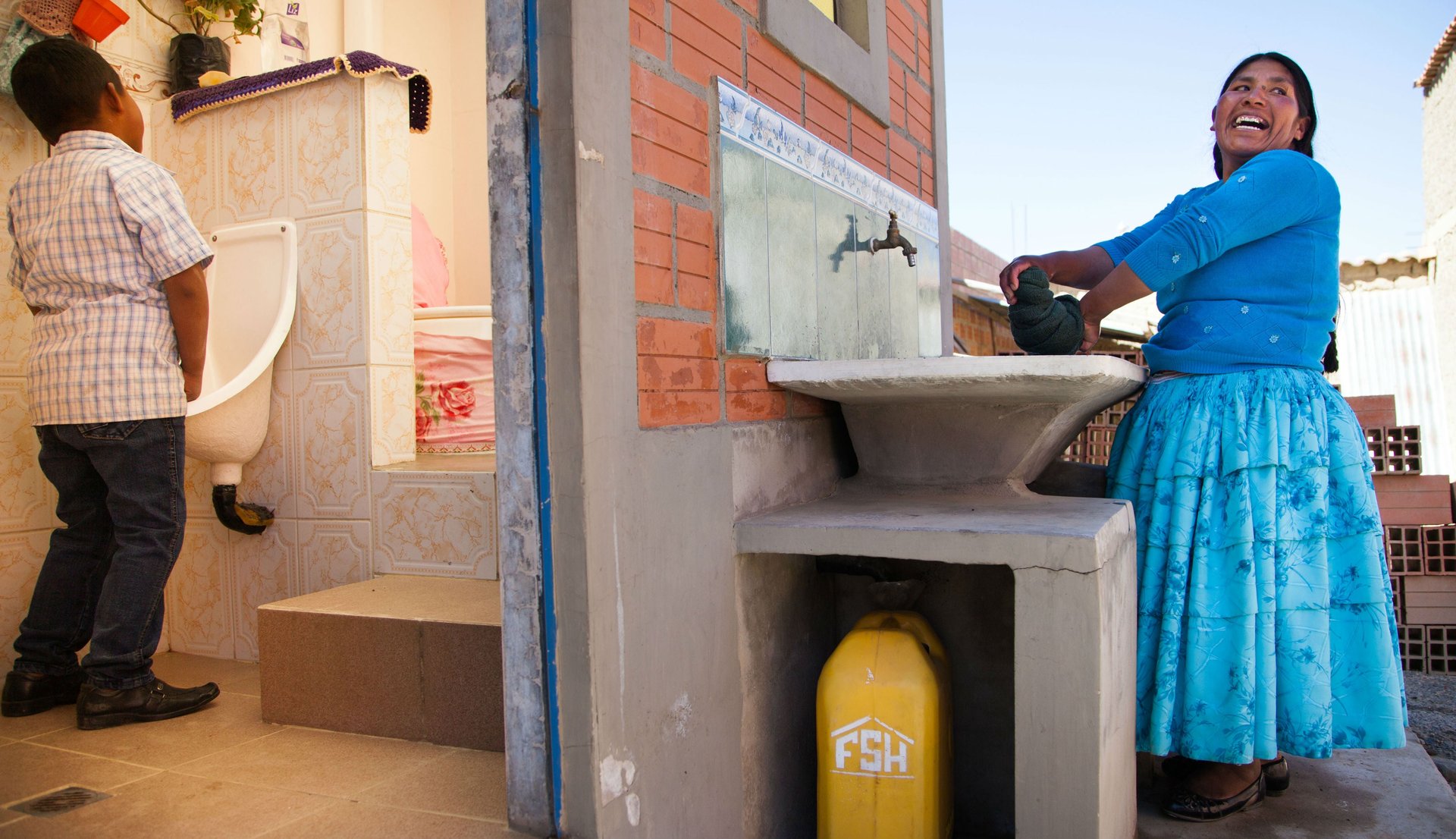

While in some parts of the world “improved sanitation” means getting a high-tech Toto toilet—self-cleaning and with a heated seat amongst other comforts—for a large part of humanity, it means having a toilet at all. According to the latest data from UNICEF—the United Nations Children’s Fund—2.4 billion people don’t have a toilet, and nearly one billion defecate in the open.
Open defecation is linked with the spread of parasites and diarrhea, which kills 300,000 children under five every year. The danger goes beyond health for women in some countries, who can risk assault if they go too far from their homes for relief at night.
Guaranteeing “improved sanitation” worldwide is one of the sustainable development goals set by the United Nations for 2030. And to help make the case for better toilets, photographer Ashley Gilbertson documented bathrooms around the world for UNICEF. His photos, accompanied here with UNICEF’s statistics on sanitation, provide a light-hearted glimpse into global toilet culture—newspapers appear to be an international bathroom staple.
Bolivia
Many rural communities in Bolivia lack access to sanitation. However, an increasingly larger number of people do have flushing toilets—like Miguel, pictured below:
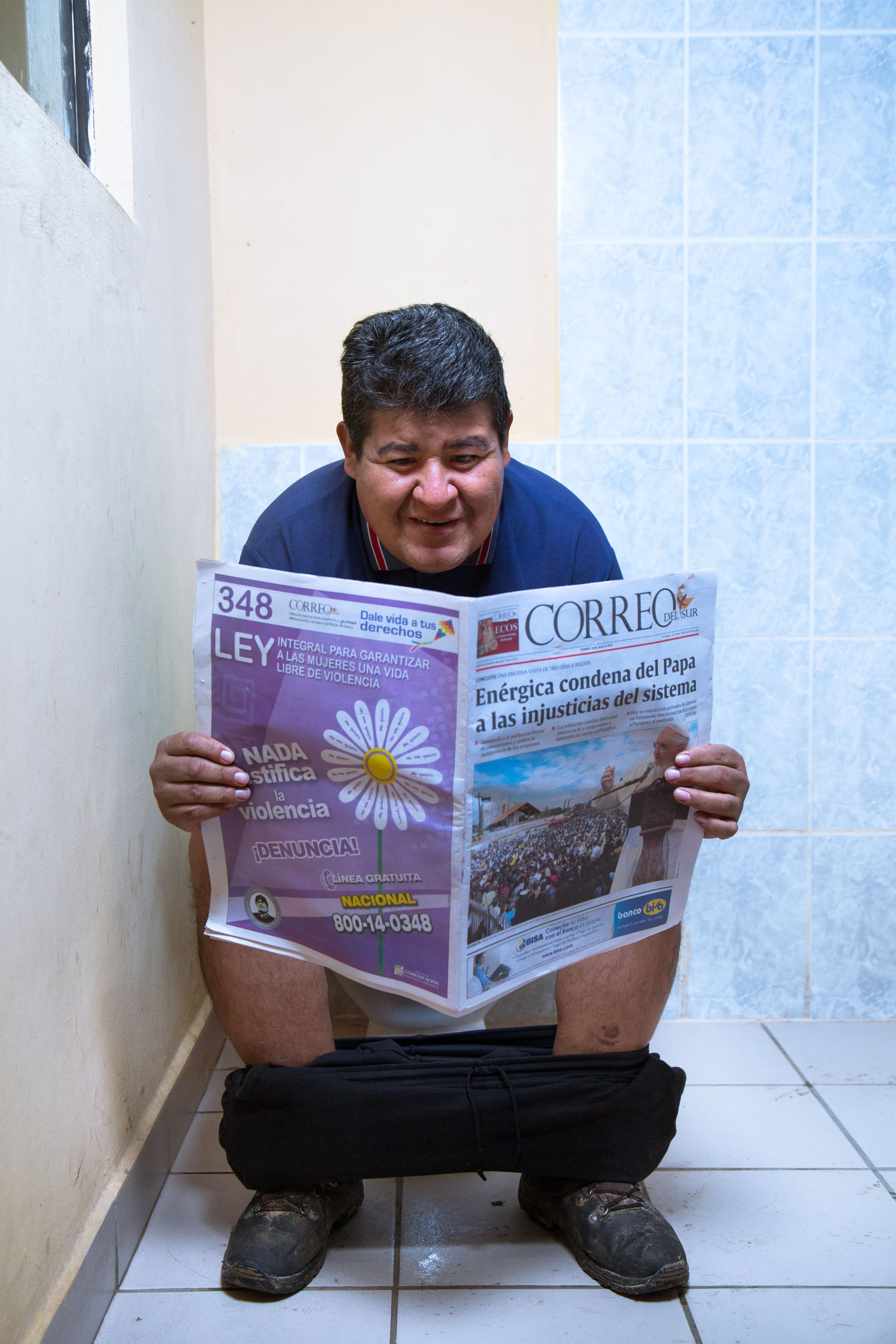
Myanmar
Eighty percent of the population in Myanmar has access to “improved sanitation,” which often simply consists of a pit latrine—like the one in San Win’s home:
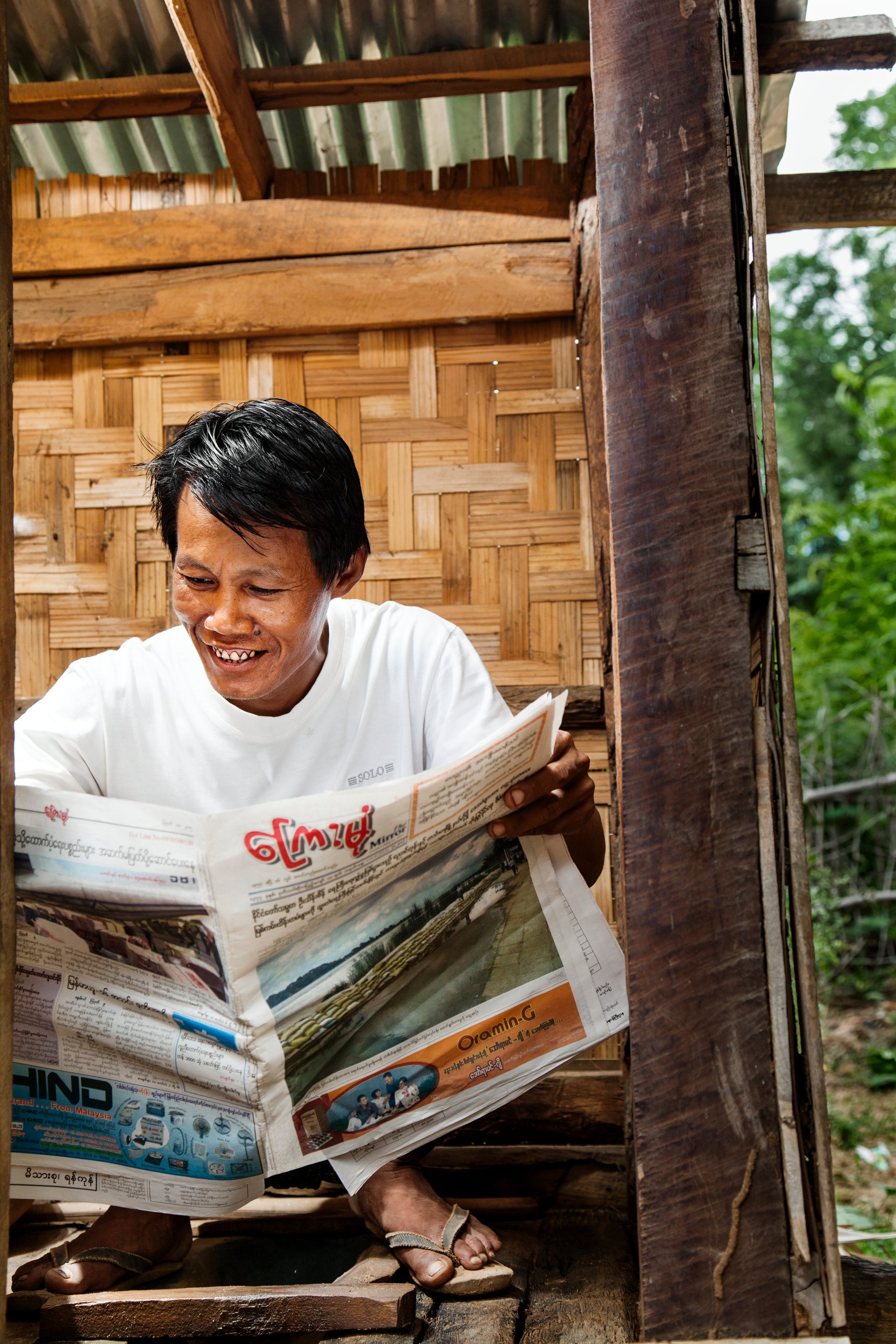
India
Nabin, using his family’s toilet below, is an exception to the rule in Indian villages, where the majority of people still go in the open. An estimated 540 million India, or about half the population of India, don’t have access to sanitation.
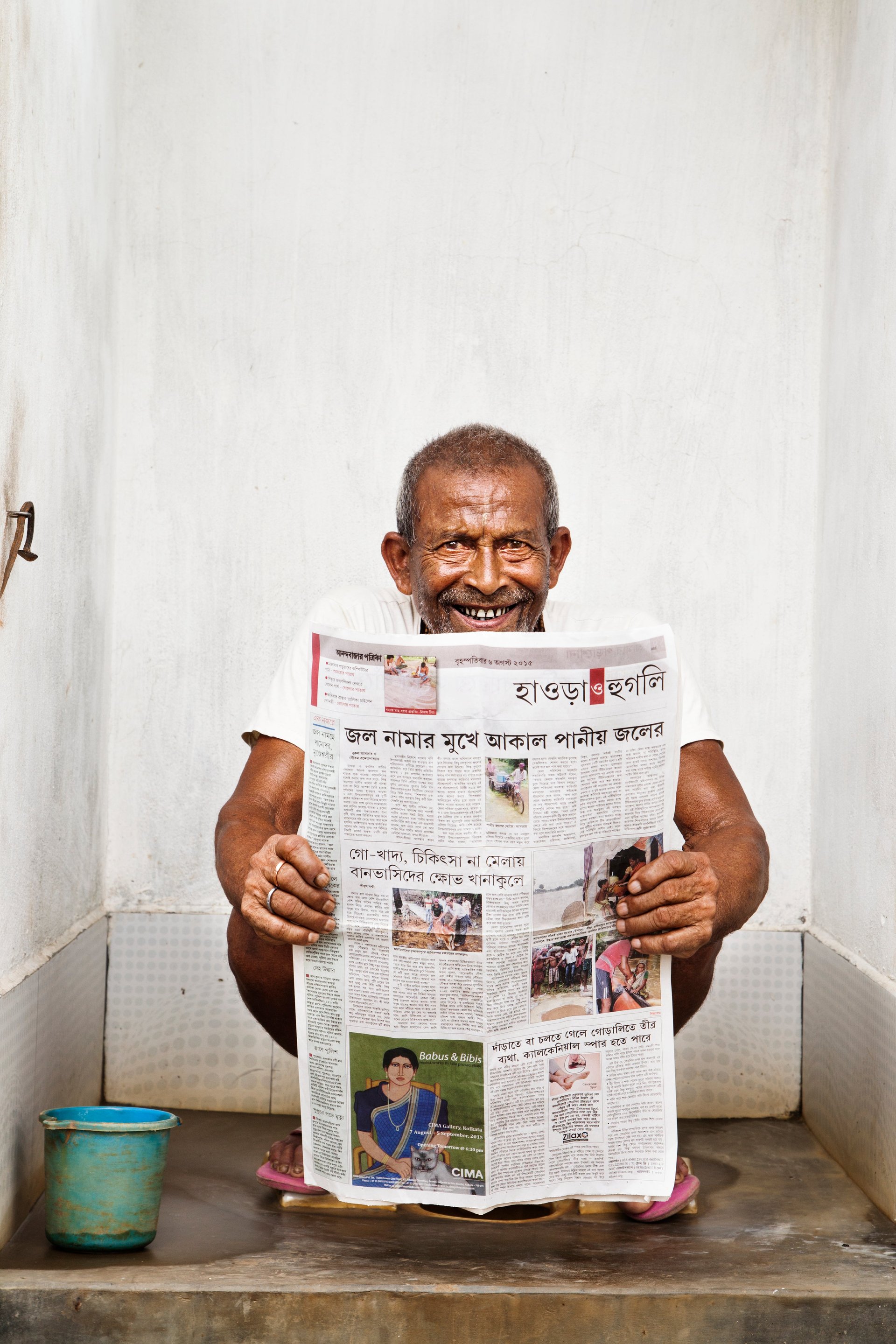
Niger
An estimated 73% of the population in the Niger still defecates in the open, says UNICEF. For a large majority of the population, then, this is still what a toilet looks like:
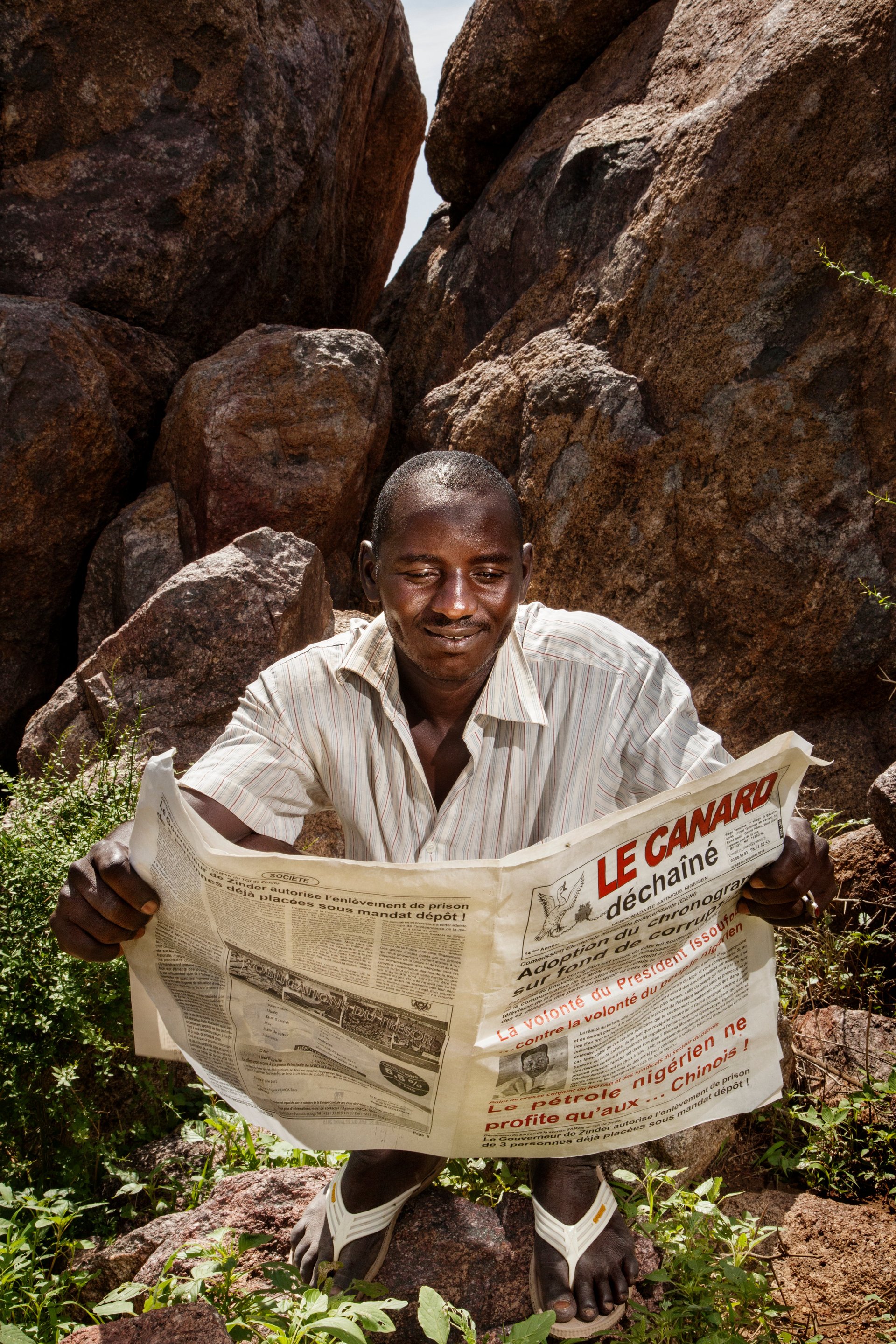
Malawi
Today, 41% of the population of Malawi has access to some form of sanitation, though the percentage is much higher in the urban areas than in the rural ones. Kalima, a tailor and victim of polio, is an exception, and uses a pit latrine in his village:
